
Abbie Headon Q&A: LEGO Build Yourself Happy
The Joy of LEGO play
We caught up with the Abbie Headon, the author of LEGO Build Yourself Happy, to talk about her LEGO on the kit, getting in touch with your emotions with LEGO, and mindful LEGO play.
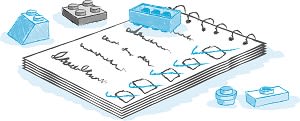
You taught English to businesspeople in Germany. Are there any parallels between learning a new language and learning to enjoy LEGO?
I guess learning a new language can be a little more daunting, because you know that one day you’ll need to use your skills in front of strangers, whereas LEGO play is something you can enjoy by yourself, in the comfort of your home. But the main similarity is that you need to open yourself up to new experiences, and allow yourself to take risks. In LEGO play, the risk is that your structure might fall down, rather than that you won’t understand someone’s directions, but in both, an openminded approach will give you the best results.
You write in Build Yourself Happy that you hung on to some of your childhood LEGO. Do you recall your first impressions of reconnecting with your old bricks?
It was literally like reconnecting with my childhood again. We are sensual creatures, and feeling the bricks in my fingers again was like time-travelling through the years, back to the 1980s!
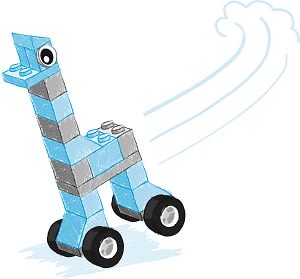
Do you think LEGO can help you get in touch with your emotions? Do you think it is the shapes or the colours that help make the connection?
I think sometimes we need to get out of our heads a little and explore the world with our other senses. LEGO has stimulating colours, tactile studs, and smooth surfaces, and that pleasing "thunk" sound when the bricks connect with each other – so for me, all those aspects work together to make LEGO very satisfying to play with. I also think the fact that you’re building something concrete is very positive.
What advice do you have on creating the right home environment for mindful LEGO play?
One of the great things about LEGO is that you don’t need loads of space to enjoy it. I’ve seen pictures of people’s dedicated LEGO rooms, and those are amazing, but actually just one box of LEGO and a clear space on the coffee table is enough to have some enjoyable LEGO play. Having said that, it’s nice if you can clear away things that would distract you from your LEGO fun – like cellphones and the TV – so you can focus fully on one activity rather than splitting your attention across lots of different channels, as we so often do.
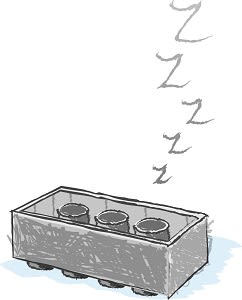
LEGO before bed, or LEGO in the morning? Which is best?
Both! Seriously, it depends on how much time you have and when you feel most awake. In the morning I’m usually too sleepy to play, but at bedtime my mind is relaxed and less tethered to the day’s challenges, so I’m a more of a night owl when it comes to LEGO.
What is a good amount of time to set aside for a round of LEGO play?
It depends what you’d like to achieve, really. If you want to have a real break and get deeply involved in your LEGO play, then I’d say at least half an hour is good. But if you just fancy stepping back from whatever else is going on in your life, just a few minutes can be enough for some satisfying brick connections. I keep LEGO on my desk, so I can enjoy the sensation of having bricks in my hands any time I want to – so really, any time you can find is ideal for a spot of LEGO play!
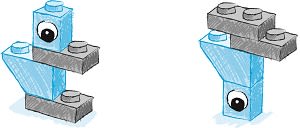
We love the switch and swap exercise featured in the book. What do you think makes it so satisfying?
I think it’s because it shows you just how versatile your creations are. You thought you had built a tree, but then it becomes an anchor, a tower, an unnameable but marvellous abstract object… Our minds are so eager to find meaning in what we see that we can surprise ourselves by what we create without trying too hard.
Why do you think breaking the rules about "good building" can be helpful?
We spend a lot of our time learning how to do things right when we’re growing up, but thinking outside the box can lead to more interesting results. So maybe you can make connections that are not very stable, or build structures that won’t stand up without help, and by doing so you’ll come up with new solutions.
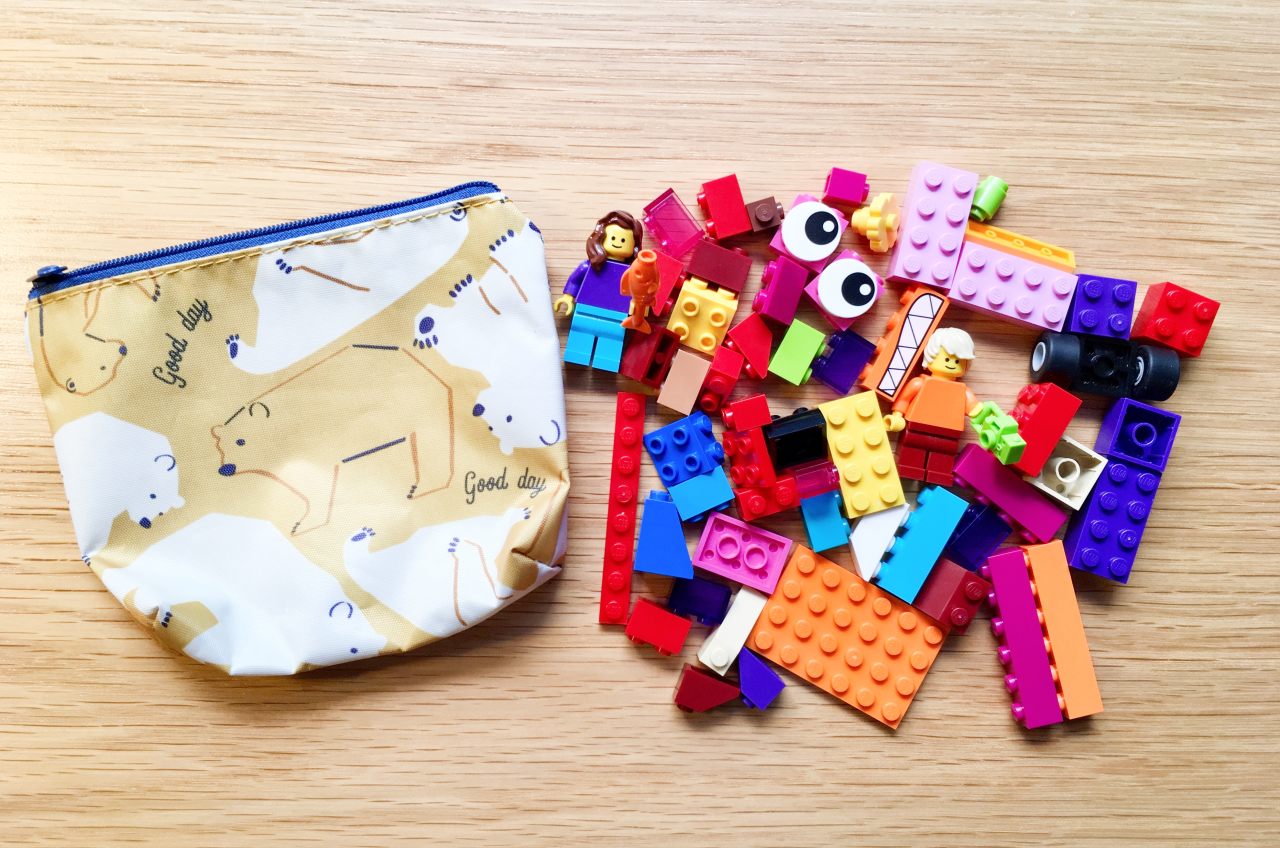
We really like the idea of an on-the-go LEGO kit (pg. 138). Do you have one, and can we see it?
I do! I’m not a planner, so it’s a nice random mix of colourful elements – with a couple of minifigures ready to bring it to life, of course.
There's a whole chapter in Build Yourself Happy on the joy of tidying up LEGO bricks, and how it's a great time to reflect on what's been achieved in LEGO play. Any tips for parents they can make use of while clearing up their kids’ bricks?
I think anything you can do to involve children in doing their own tidying up would be good for everyone’s peace of mind, and the best way to do that is by making it seem like part of the play session. See who can put away the bricks fastest, most carefully, most quietly (so as not to wake them now that the play session is finished for the day – though maybe that last one is wishful thinking!).
Otherwise, if you find yourself doing the tidying-up by yourself, I always find that there’s something soothing about putting pieces away after a session. If you’re the kind of person who likes things to be very orderly, you might want to put different types and colours of pieces in their own special compartments. But if you just want to get the job done so you can put your feet up, there’s something surprisingly satisfying about scooping up a whole loads of bricks and tipping them into a box. They cascade and land with a pleasing clatter – so if you fancy making a noise, LEGO tidying time gives you the opportunity you need.

If LEGO bricks represented emotions, what emotion do you think a clear plastic piece would be?
That’s an amazing question! The transparent pieces always communicate glamour or light to me, so they could convey energy and extravagance – but equally you could see them as being open and honest, hiding nothing. You can see all their tubes, after all!

About Abbie Headon
She is an author from Portsmouth, England, who has rediscovered the joy of playing with LEGO bricks. After digging out her childhood collection of LEGO bricks from the attic (and treating herself to a few new sets), she has written LEGO Build Yourself Happy to help readers unwind, find zen, and build a little bit of LEGO joy into their everyday lives.

